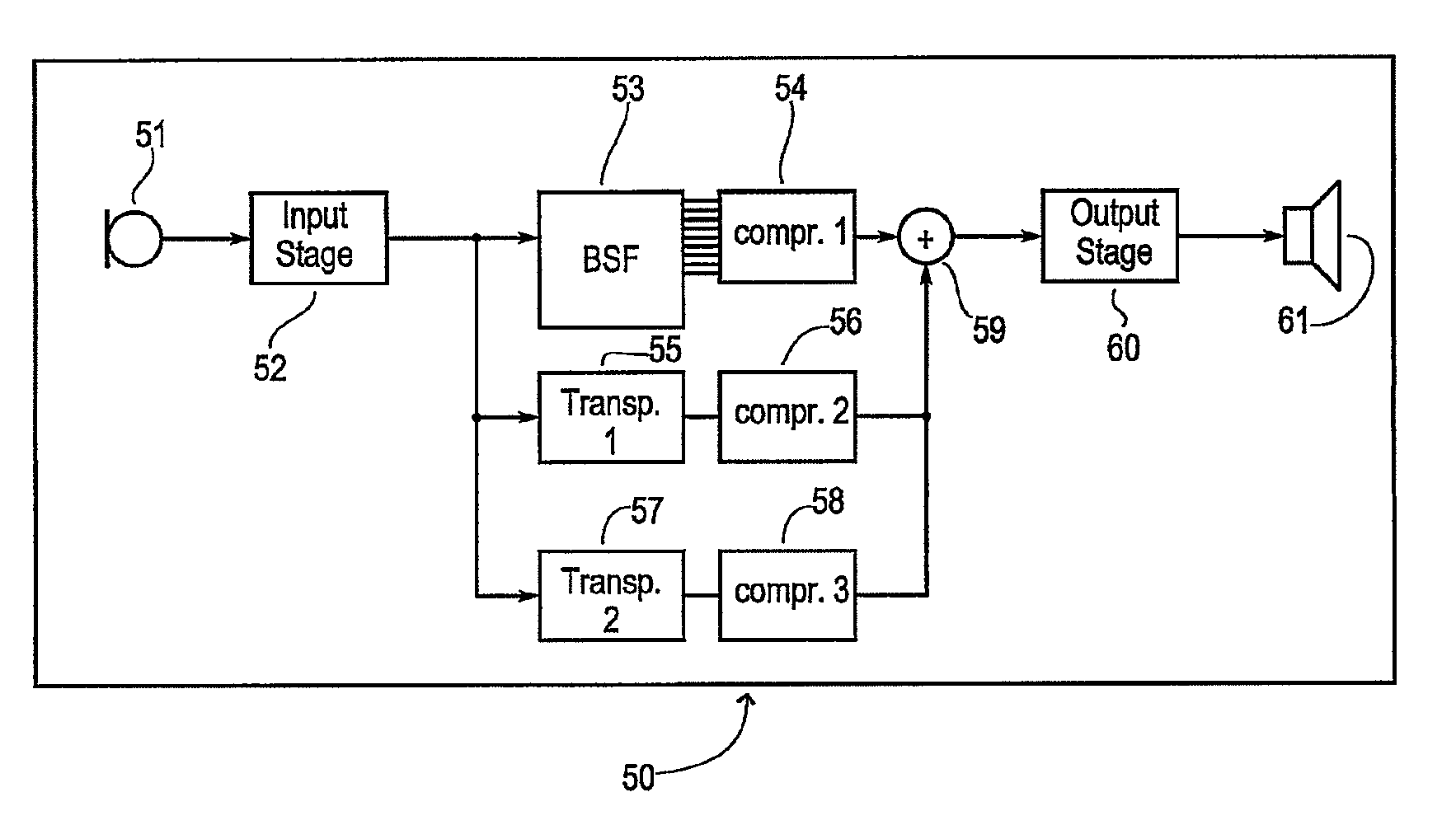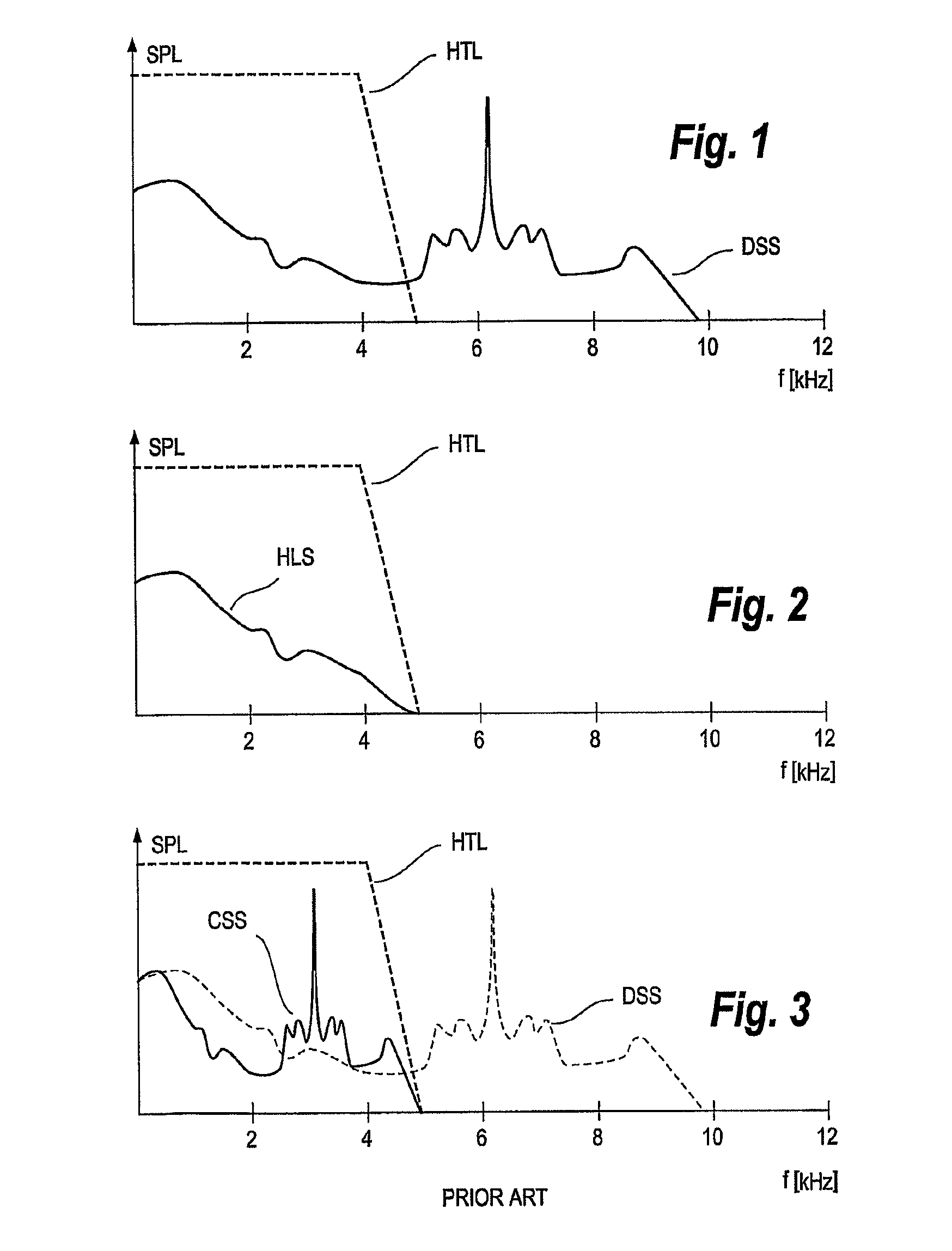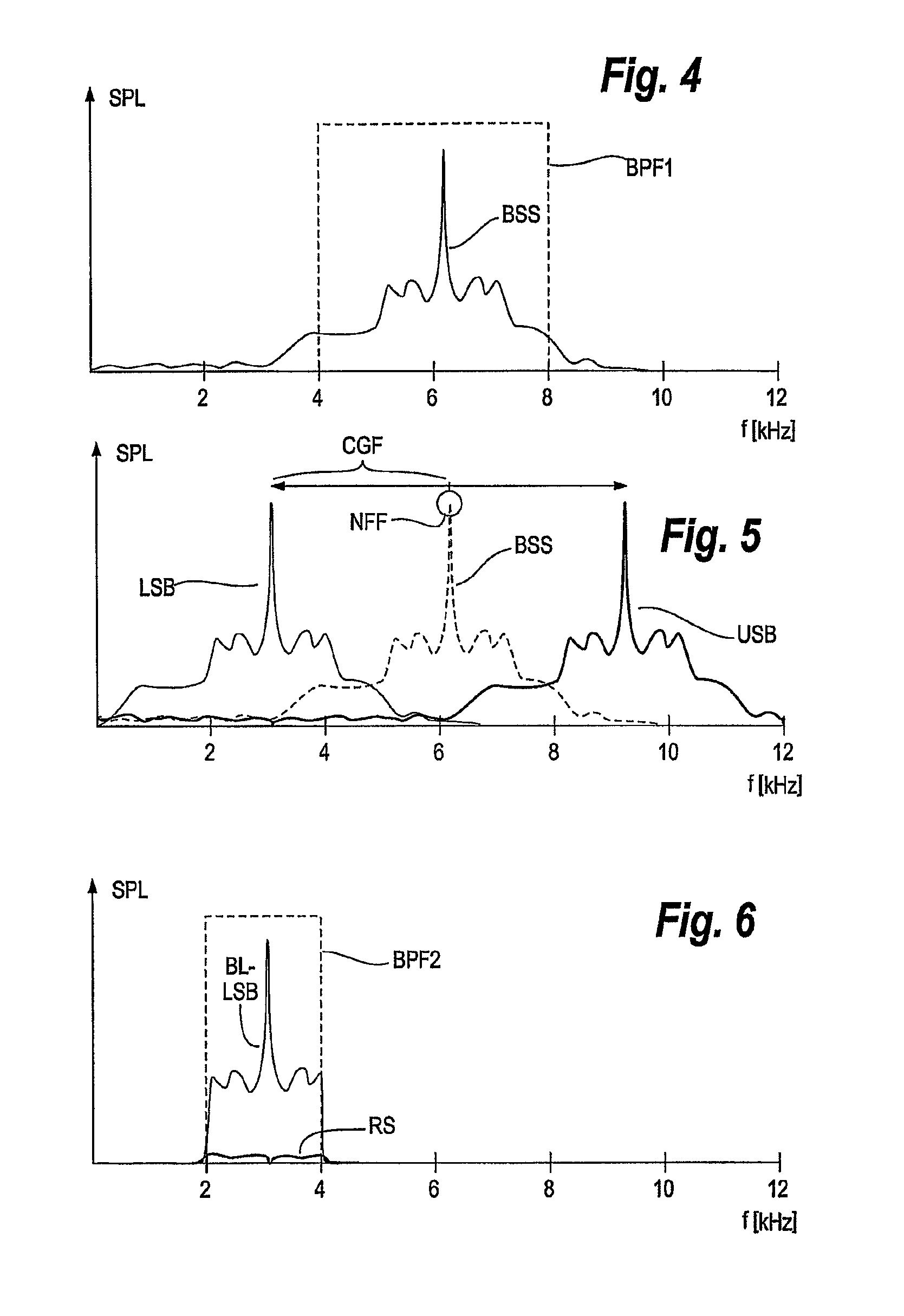Hearing aid with enhanced high frequency reproduction and method for processing an audio signal
a high frequency reproduction and audio signal technology, applied in the field of hearing aids, can solve the problems of steep sloping hearing loss, and high frequency hearing loss who do not gain any improvement in speech perception, and achieve the effect of preserving low frequency sound without distortion
- Summary
- Abstract
- Description
- Claims
- Application Information
AI Technical Summary
Benefits of technology
Problems solved by technology
Method used
Image
Examples
Embodiment Construction
[0032]FIG. 1 shows the frequency spectrum of an audio signal, denoted direct sound spectrum, DSS, comprising frequency components up to about 10 kHz. Between 5 and 7 kHz is a band of frequencies of particular interest, incidentally having a peak around 6 kHz. The assumed perceptual frequency response of a typical, so-called “ski-slope” hearing loss hearing curve, denoted hearing threshold level, HTL, is shown symbolically in the figure as a dotted line, indicating a normal hearing curve up to about 4 kHz but sloping steeply above 4 kHz. Sounds with frequencies above approximately 5 kHz cannot be perceived by a person with this assumed hearing curve.
[0033]FIG. 2 illustrates how the audio signal DSS, shown in FIG. 1, is perceived by a person with the particular assumed “ski-slope” hearing loss, HTL, shown in FIG. 2 as a dotted line. The resulting perceived part of the frequency spectrum, denoted the hearing loss spectrum, HLS, is shown in a solid line below that. Sounds at frequencies...
PUM
 Login to View More
Login to View More Abstract
Description
Claims
Application Information
 Login to View More
Login to View More - R&D
- Intellectual Property
- Life Sciences
- Materials
- Tech Scout
- Unparalleled Data Quality
- Higher Quality Content
- 60% Fewer Hallucinations
Browse by: Latest US Patents, China's latest patents, Technical Efficacy Thesaurus, Application Domain, Technology Topic, Popular Technical Reports.
© 2025 PatSnap. All rights reserved.Legal|Privacy policy|Modern Slavery Act Transparency Statement|Sitemap|About US| Contact US: help@patsnap.com



